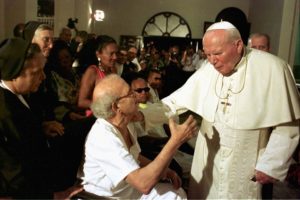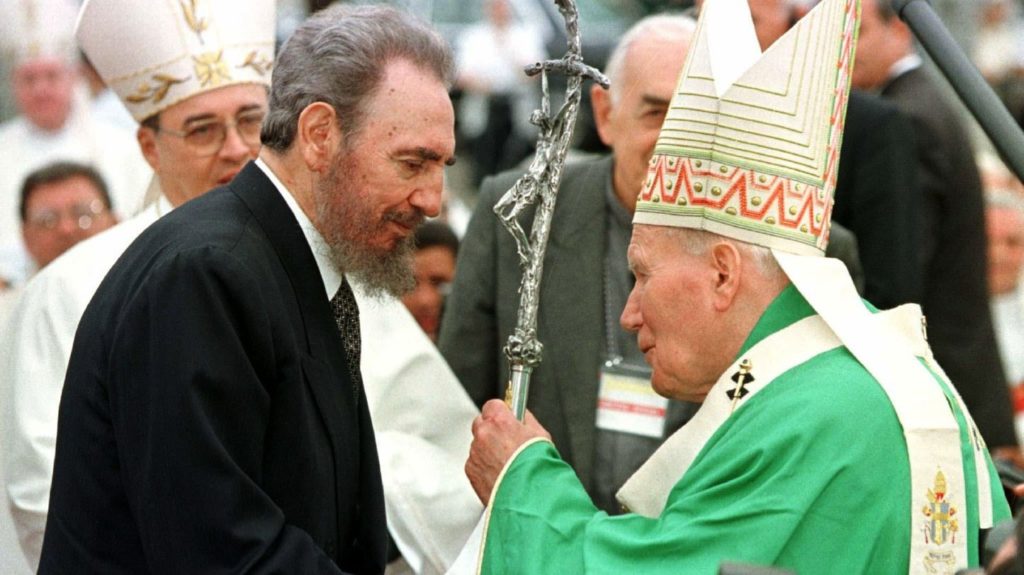ROME – For anyone in the American press who covered Pope John Paul II’s historic trip to Cuba 25 years ago, featuring the high drama of a tête-à-tête between the Polish pontiff and Fidel Castro, the experience will forever be associated with another figure who, at the time, wasn’t actually anywhere near the island nation: Monica Lewinsky.
American television networks and newspapers had dispatched their A-list talent to Cuba, including Peter Jennings, Dan Rather, and Tom Brokaw, only to pull them all out and send them screaming back to Washington when the Lewinsky affair broke the very same day the pope arrived in Havana, on Jan. 21, 1998.
A quarter-century later, most American journalists would probably agree that John Paul’s trip to Cuba was by far the more important news story that fateful week – even if we’d probably also have to stipulate that if a similar coincidence were to unfold today, we’d go with scandal over substance again.
As Pope Francis is set to embark Jan. 31 on what will be the 40th international trip of his papacy and his third to Africa, visiting the Democratic Republic of Congo and South Sudan, it’s worth looking back at John Paul’s historic voyage 25 years ago – both for what it has to teach about the leverage created by a papal trip, and also its limits.
At the time, the theater of the experience seemed obvious: John Paul II, 77 at the time, was the triumphant son of Poland who’d brought down Communism in Europe; Fidel Castro, who was 71, was the world’s most flamboyant remaining Communist dictator, the head of an officially atheistic state which nevertheless has deep Catholic roots.
In the aftermath of the trip, here’s how Time’s cover story summed it up: “What Brought Them Together – Two Giants of the Century Put their Faiths to the Test.”
From the arrival ceremony at Havana’s Jose Marti International Airport, it seemed the battle lines were drawn.
John Paul II began by praying out loud that Cuba would become a land of “freedom, mutual trust, social justice and lasting peace,” phrasing which clearly implied it wasn’t those things yet. Castro, for his part, bluntly told his guest that “we choose a thousand deaths rather than abdicate our convictions.”
Yet in reality, both men came into the experience with strong incentives to find common ground.
Castro wanted the pope’s moral authority behind his campaign to end the crushing US embargo on Cuba. On that front, John Paul delivered: “May Cuba, with all its magnificent potential, open itself up to the world,” the pontiff memorably said, “and may the world open itself up to Cuba.”
For his part, John Paul II wanted to pressure the Castro regime to provide more breathing space for the Catholic Church, badly weakened by decades of state-imposed atheism, tight social controls such as the closure of all Catholic schools, and the pervasive influence of Afro-Cuban religious traditions such as Santería.
Vatican diplomats, experts in playing the long game, were also hoping to position the Cuban church to play a role in a post-Castro society. They couldn’t have known that Castro would survive another 18 years, outliving John Paul II by a decade, and that the only transition of power would be to his brother Raúl.
In terms of an opening for the faith, John Paul notched a breakthrough even before he arrived. As a good faith gesture, Castro even authorized the public celebration of Christmas in Cuba for the first time since 1969. Though announced as a one-time exception, the ban on Christmas never returned, making it a lasting fruit of the papal trip.
The pope’s program was carefully crafted to push Castro on religious freedom, but from within his own frame of reference.

On Jan. 24, the pontiff traveled to a copper mine outside Santiago to crown the Virgin of El Cobre, Cuba’s most important Catholic icon. Castro’s own mother, Lina Ruiz, credited the Virgin with saving her son’s life when he was fighting as a guerilla in the 1950s, and even the most ardently Marxist of Castro’s supporters often turned to Our Lady of El Cobre in moments of personal need.
Looking back today, the results of the trip seem a lesson in settling for what’s possible.
Father Ariel Suarez, secretary of Cuban bishops’ conference, insists John Paul’s visit marked a turning point for the local church.
“Those memorable days gave a new boost to catechesis, to the adult catechumenate, to Caritas’ social work. Diocesan libraries and publications were consolidated, villages and cities started holding regular processions again, especially around feast days. Family and prison ministry gained ground, and ecumenical relations deepened,” Suarez recently told the papal charity Aid to the Church in Need.
Yet even after the trip, Castro didn’t budge on religious education or on access to broadcast media, both key agenda items for local Catholic leaders. To this day, Cuba’s regime routinely engages in surveillance, harassment of religious leaders and laypeople, forced exile, fines, and ill treatment of religious prisoners of conscience. Just this past September, authorities expelled Father David Pantaleón, the local Jesuit superior, for failing to control Jesuit criticism of the government.
In the end, John Paul’s Cuban odyssey may not have achieved quite the sea change he hoped, either in terms of the country’s internal climate or Cuba’s standing in the world. (The US ban on trade with Cuba, after all, remains history’s longest running embargo.) Yet the trip nevertheless produced a new sense of possibility, it helped pull a staggered church to its feet, and it solidified John Paul’s reputation as the premier spiritual statesman of the 20th century.
For all that, John Paul probably was willing to shrug off being temporarily overshadowed by the sordid Lewinsky saga – scandals, after all, come and go, but history is forever.

